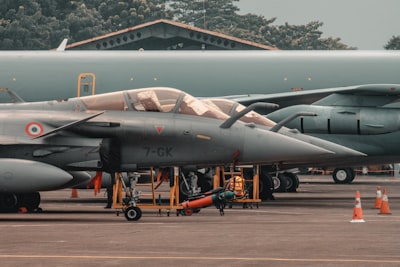Summary:
Recently surfaced photographs of China’s J-20A stealth fighter—an advanced aircraft also known as the Mighty Dragon—have ignited speculation about its anticipated public debut during China’s upcoming military parade in September. The images, circulating on Chinese social media, show the jet alongside sightings of the J-35, indicating potential coordinated rehearsals ahead of the 80th anniversary commemoration of China’s victory in World War II. The J-20A now features domestically produced WS-15 engines and modified airflow inlets, signifying a leap in indigenous technology. These unveilings, timed with the parade, hint at Beijing’s intent to showcase homegrown military prowess and possibly reveal further, yet-unseen weapon systems.
Analysis:
The public emergence of the J-20A at this historical moment serves multiple functions. On a technical level, upgrades such as the new WS-15 engines and refined diverterless supersonic inlets signal China’s growing self-reliance and rapid progress in high-performance military aviation. Unlike earlier reliance on Russian or collaborative components, the J-20A’s latest enhancements point to breakthroughs in domestic engine technology—long considered a bottleneck in Chinese aerospace ambitions.
Politically, the timing is significant. The September military parade not only memorializes wartime victory but also operates as a platform for projecting national strength and unity. By debuting the J-20A in this context, China asserts its place among top-tier global military powers. It’s an implicit response to U.S. and allied advances in stealth aviation, signaling that China is narrowing the technological gap and is ready to shape the narrative of Asia-Pacific security.
The coverage itself—sparked by unofficial social media images—offers a glimpse into how information is both controlled and released in China. While some details are leaked to generate buzz and bolster nationalist sentiment, official channels retain the right to withhold critical specifics, maintaining strategic ambiguity.
Discussion:
The J-20A’s anticipated parade appearance raises questions about the relationship between military hardware, national image, and regional security. Military parades are as much about messaging as they are about hardware: they reassure domestic audiences of national strength while signaling resolve and capability to potential adversaries. The debut of a stealth fighter with indigenous engines isn’t just a technical feat—it’s a political statement against technological dependency and a marker of China’s ambition to rival the U.S. and Russia.
Yet, such displays are double-edged. They can prompt regional anxieties, especially among neighbors wary of China’s intentions, and may trigger further arms development in Asia. Will this demonstration inspire constructive competition and dialogue, or will it accelerate an arms race?
Moreover, the parade’s historical framing—linking new military achievements to the memory of WWII victory—positions China as both a guardian of the postwar order and an emerging challenger within it. This tension reflects broader global trends, where military anniversaries become stages for contemporary power plays.
Critical Questions:
- How will the U.S. and other regional actors respond to the parade and China’s technological advancements?
- Does the rush to showcase new weaponry risk exposing unproven technology or vulnerabilities?
- How effective are such displays in genuinely shifting power balances, versus serving as symbolic gestures for internal audiences?
Ultimately, the J-20A’s moment in the spotlight is about more than one aircraft—it’s a revealing chapter in the story of China’s rising technological, military, and geopolitical aspirations.

Comments
No comments yet. Be the first to comment!